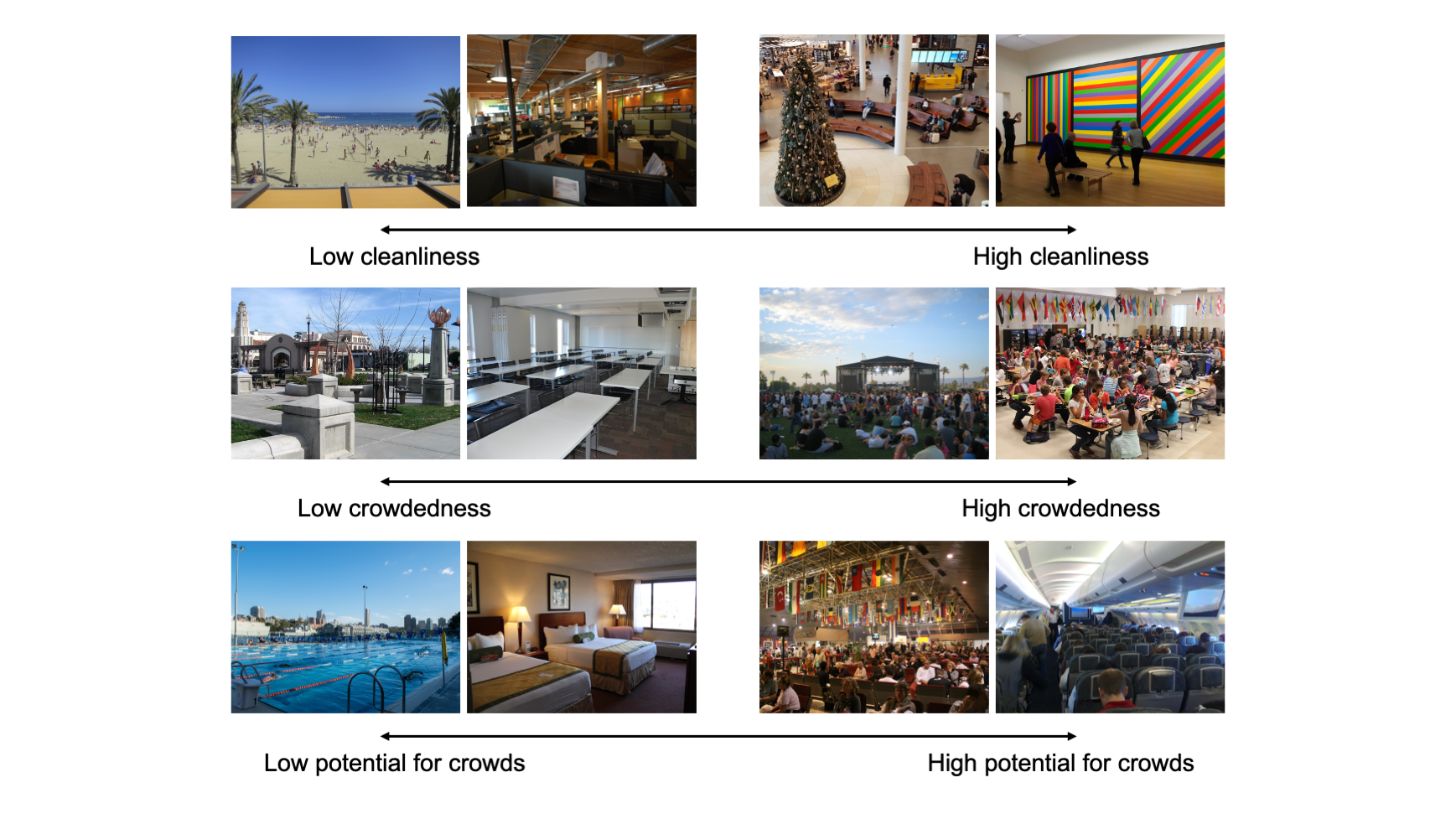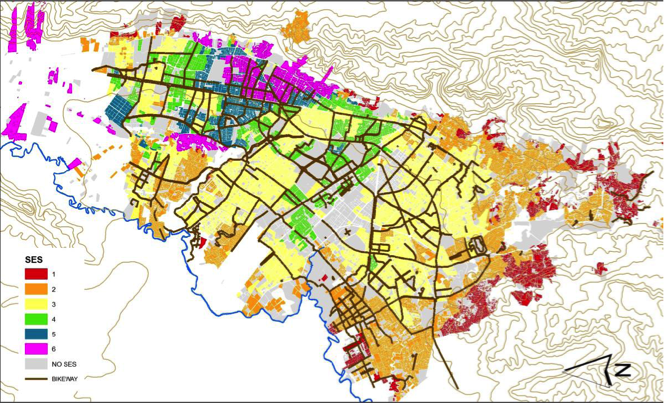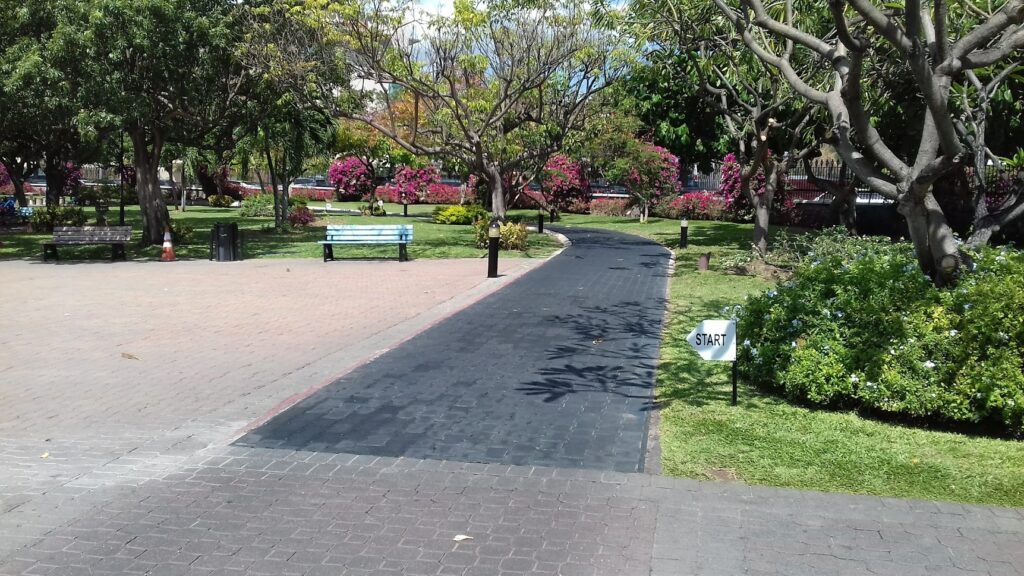
How do people conceptualize pathogen transmission risk in cities using visible cues?
Share
Target audience
Urban planners, Architects, Policy makers, Public health officials.
The problem
Urban and architectural environments are rich with visible cues that occupants can use to infer the transmission risk of different pathogens, such as COVID-19, but it is unclear which cues members of the public use to make these inferences, and how these cues compare to those used by experts.
What we did and why
We asked participants to rate a series of images of urban and architectural environments on their perceived pathogen transmission risk. We then correlated these ratings with objective assessments of the characteristics of those spaces to uncover associations. We replicated the same analysis using expert assessments of pathogen transmission risk, and we compared the correlations between expert raters and lay raters.
Our study’s contribution
This study provides data on which visible cues members of the public use to render judgments about pathogen transmission risk in the diversity of urban and architectural environments they occupy. Moreover, this study provides a comparison between conceptualizations of risk between members of the public and experts, which is a meaningful comparison in light of the fact that the two groups can deviate in conceptualizations of risk.
Impacts for city policy and practice
The data from this study is useful for designers interested in created spaces that are perceived as posing a “low” pathogen transmission risk. They are also useful for health policy decision makers by providing insight into the nature of the pathogen transmission risk conceptualizations held by members of the public. This information can be used to create more “nuanced” public health policies in the event of future pathogen outbreaks.
Further information
Full research article:
Investigating expert and lay judgments of pathogen transmission risk in urban and architectural environments by David Borkenhagen & Colin Ellard
Related posts

Lack of ‘Ciclorutas’ (bicycle lanes) in Bogota’s neighbourhoods of low socio-economic status shows inequality in the access to active transportation options, potentially increasing health disparities.

Understanding decision-making for active living infrastructure in a middle-income country: Aspirations and pressures for development may not support creation of good quality walking and cycling

This comparative study of 10 cities across the globe aims to understand the major factors that drive the sprawl conditions and their impact on the outer edges of the cities. Land is a very potential natural resource that has been exploited over the past few decades. Migration of people in search of better living conditions has led to the formation of cities, which are deemed to provide better quality of life. However, the rate of influx has become very high, leading to saturation in cities and forcing people to move towards the outskirts.